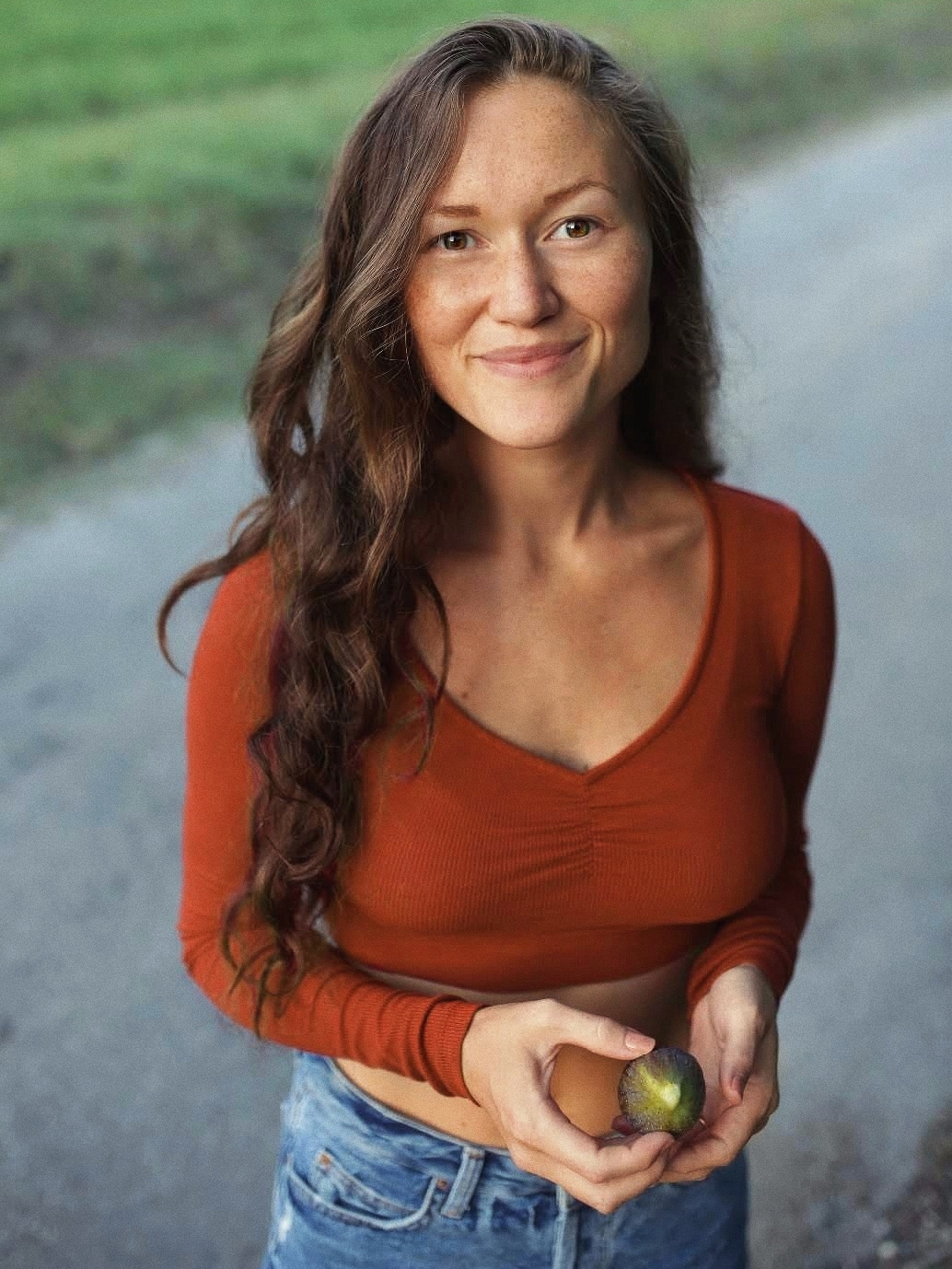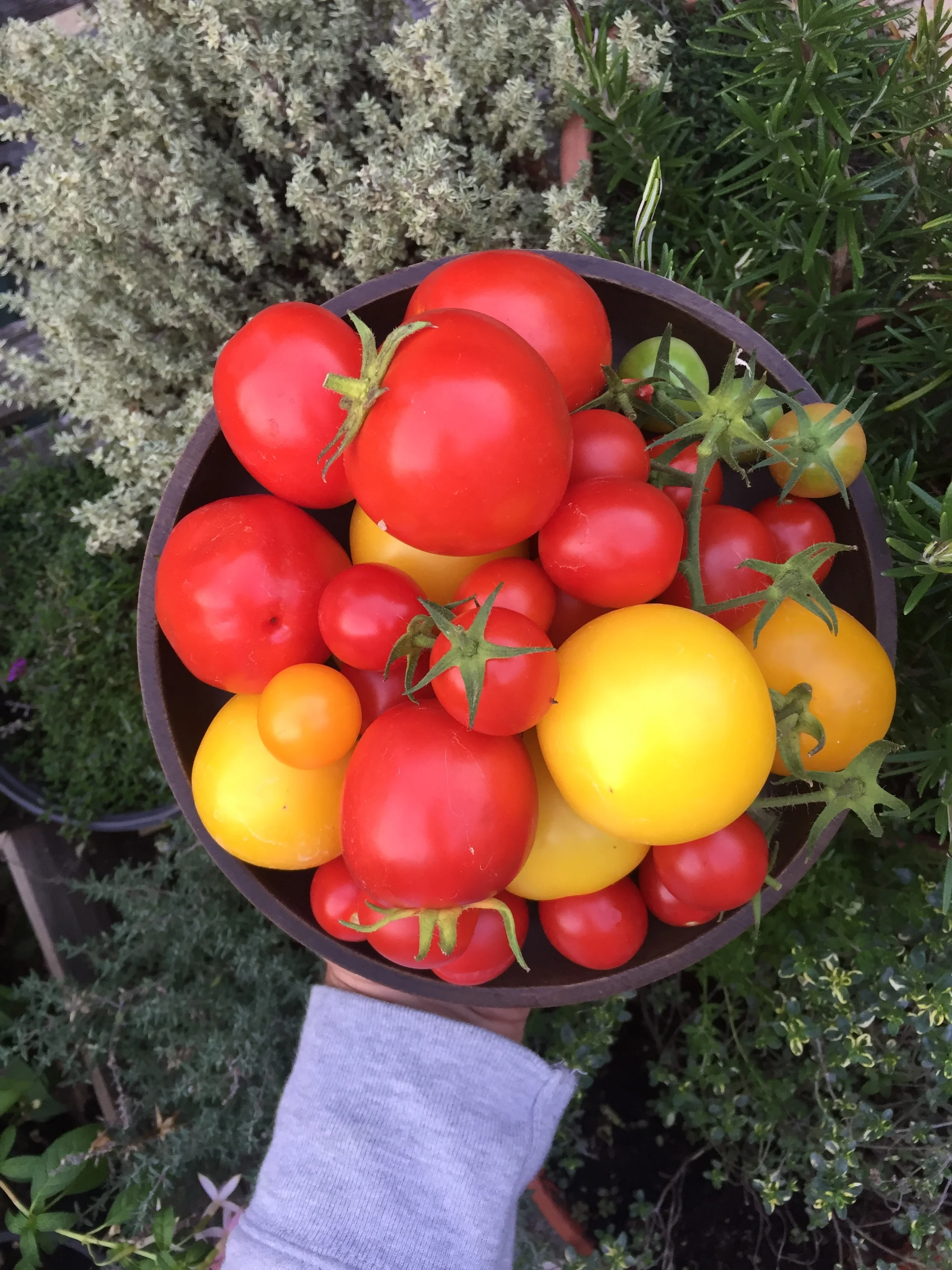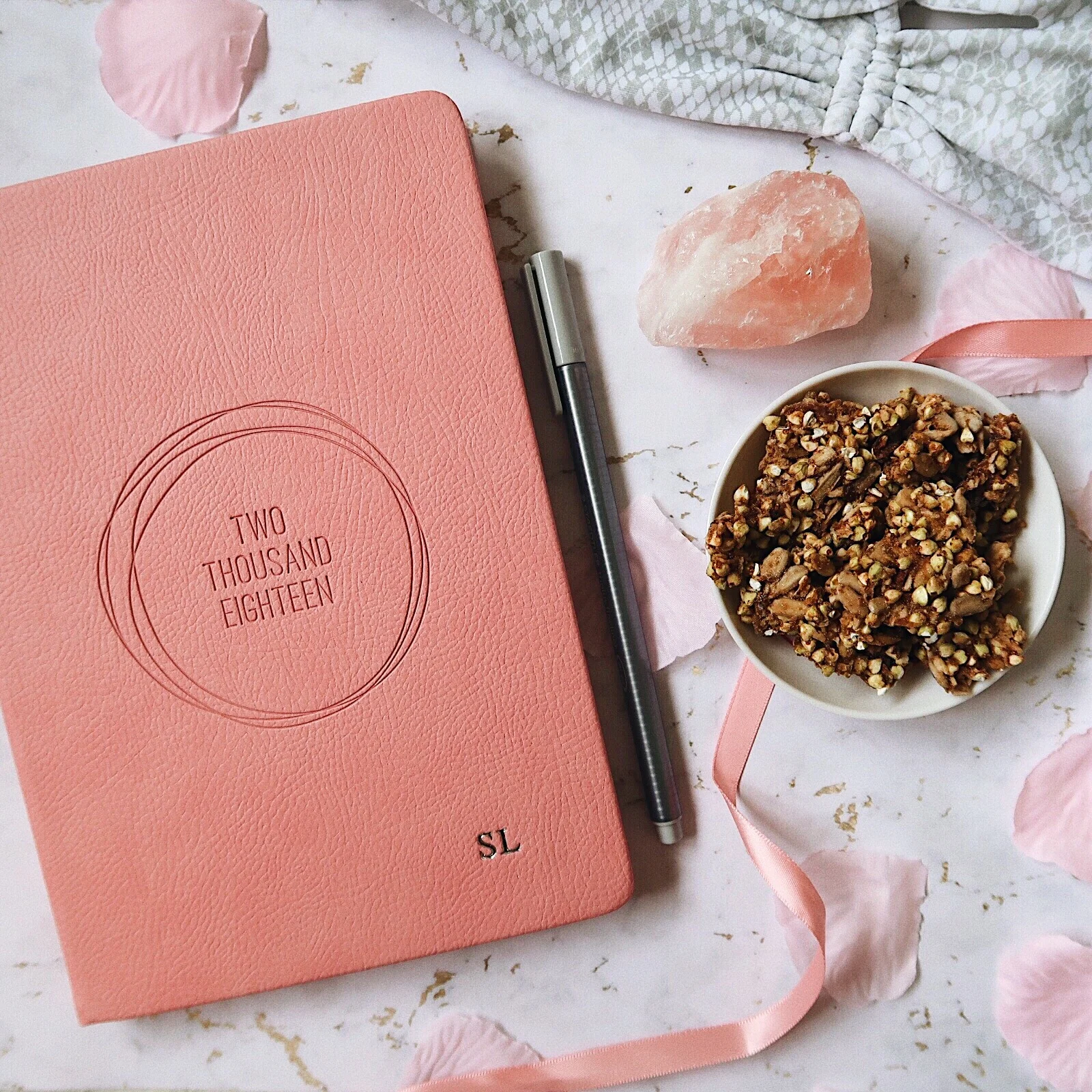Urban Vegetable Gardening: The Challenge (January)
Our vegetable garden in July 2017 after building some recycled planters and beds.
Since living with my fiancé, we've been trying to turn our small, neglected urban garden into a space that attracts birds, bees and butterflies.
This year, we want to be a bit more serious about it all, issuing ourselves a challenge to have our garden provide all our fruit and veg for three weeks straight this summer. So where to begin?
THE JOURNEY SO FAR
2016 - The first year we attempted to grow anything in our garden, the changes were small - but certainly a step in the right direction. There were just a few tubs of tomatoes and kale, which both got destroyed in a heatwave when we were away - oops!
To be honest, the kale was already 'gone', having mostly been eaten up by caterpillars. We planted some strawberries which have happily now spread everywhere, planting themselves in cracks between concrete slabs. We started with some easy chives too - they have a beautiful purple flower in June, perfect for pollinators.
2017 - Last year, we stepped it up and threw away the old shed which was last used by the building's previous occupants, meaning more space for veggies. We built some sturdy planters from recycled/found wood, and accepted plants from friends and family to go into our vegetable patch. We grew a bunch of things - from apple cucumbers to San Marzano tomatoes, curly-leaved kale to fresh garden peas. We learned a lot: mostly about where the light is in our garden, and what we can/can't grow.
It was very humbling making a stew or salad out of the things we grew from seeds, grown in containers we salvaged & recycled and in compost that came from our kitchen scraps from the past 2 years.
Surprisingly, the garden was full of life in spring and summer, lots of insects (the good kind). There was something really pleasing about eating fruit and vegetables that we grew and nurtured. We hosted friends a few times and it made such a difference having everyone congregate in an outdoor space surrounded by green plants and flowers.
Crop of the season? I'd have to go with the vine-like apple cucumbers, cucumbers the shape and colour of tennis balls. If not the cucumbers, then the range of blueberries. There's nothing I relished more last year than going into the garden for a morning snack of home-grown blueberries.
The Challenge: 2018
So where does that leave us this year? We've really enjoyed the learning process over the last two years, and we want to do even more with our small space this year. The photos from last year show that with a bit of time, some online reading and a "let's just do it" attitude, we were able to turn our concrete box garden into a mini vegetable garden with plenty of fresh fruit and veg. This year, we want to challenge ourselves to grow enough fruit and veg for three continuous weeks in the summer of 2018. We want to build a vegetable and fruit garden that will supply all of our fruit and veg, or as close as possible, for three weeks. This means that no store or market-bought vegetables or fruit will be allowed.
It's ambitious, but we're setting our goal high and seeing what we can do!
The Space
Our garden in January 2018 in the middle of winter. Not a good look!
The space isn't huge, but it's still enough for us to grow a good variety of produce. The only downsides are that the garden is north-east facing and in the shadow of a bigger building, meaning light can be an issue. For that reason, we are forced to put our light-loving veggies and fruits at the back of the garden to allow them to get full sun during the summer. We haven't tried growing anything serious up the other end - closer to the house, but last year the kale seemed to thrive under the semi-shade.
The previous owner didn't take too much care of the garden, and by the looks of it he DIYed it by concreting everything up - he did install a tap though, which is very handy in the summer months.
We live in east London, so we get don't really get snowy winters - but we're realistic enough to not try to grow something from the tropics.
The Plants
So what are we going to grow? In an ideal world we'd pick everything and try to grow it, but we know we don't have the space to put in big trees, and we don't have the light to extend our beds all the way to the fence (the vegetable bed is behind the table in the picture above).
We aim to build more recycled planters, as the one from last year worked out really well. If you're able to find shipping pallets made from decent wood, they can be perfect for providing the timber for your pallets. They're often left outside shops, or in the parking areas of garden centres or supermarkets. If you're up for the challenge (it's not hard), you can save a good amount of money by recycling these pallets - just make sure you're allowed to take them away!
The delightful folks at Mr Fothergill's and DT Brown have supplied us with seeds for vegetables and live fruit plants. On top of this, they've given us some seeds for flowers to bring in the pollinators, which should help our plants turn the flowers to fruit. The great thing about the selection of plants that we've ordered from Mr Fothergill's and DT Brown is that the packages will be trickling in throughout the growing season, rather than receiving one bulk of seeds, trees and plants.
We already have a few things in place in the garden - strawberries and mint are popping out of most corners, and we have a nice selection of herbs (great for herbal teas and bees) and a few dwarf fruit trees too. Last year, friends and family gave us different seedlings to help out with the annual bed (plants that will grow, provide a crop and die), and we'll be swapping seeds and plants with them this year to help increase the variety of our harvest.
Below are a list of fruits that are alive and well, ready to start growing in the spring.
Raspberries - Regular, Golden
Plum tree
Cherry tree
Blueberries - Sunshine Blue, Legacy, Draper
Redcurrants
Blackcurrants
Rhubarb
Goji berry shrub
Strawberries
Figs - Panachee & Brown Turkey
Almond
Peach
Red grape vine
While most of the above we sourced ourselves, some came from Mr Fothergill's and DT Brown. We were very impressed with the quality of the plants sent over. They were packaged very well, and we couldn't find a single broken branch or twig in the empty box. That was a first- we've tried quite a few online stores for garden supplies, so we were pleasantly surprised! Below are a few photos from the delivery - the first this year. As it's the middle of January, they do look bare - but give it a few months and they'll have their first leaves. We're really excited to grow something new, as well as try a new type of blueberry.
From left to right: Grape - Boskoop Glory, Fig - Brown Turkey , Almond (Patio), Blueberry Legacy
What We Need To Do - January
There's not too much to be done this month. Here are a few things that we'll be doing and that you might want to consider if you're growing your own this year:
Pruning. We'll prune back the blueberries and other berries to make sure they give us a larger amount of fruit than last year - we're still trying to figure out pruning!
Continue composting. As mentioned earlier, we have been making our own compost from kitchen scraps, old cardboard boxes and everything we can get our hands on. Don't make the mistake of adding grains (pasta, rice etc) or any type of meat to your compost heap. Most councils in the UK give out free or heavily-subsidised compost bells like our one (seen in some of the photos above). They're great and, in the past two years, ours has matured nicely. All of our rotten fruit, veg or peel from our day-to-day food is thrown in there, but we do keep an eye on it to make sure it's diverse enough - we don't want our compost to be too wood-heavy, to only contain rotten veg or only one type of anything. We try to keep a balance, and also try not to let it dry out. A few basic rules with your compost heap can go a long way!
Source wood for pallets. In a month or two, we'll be building more planters, We will need more timber for this, but we're on the look out for good-quality shipping pallets (EPAL are usually perfect).
So far, we've picked up a bunch of used pallets for free, and we'll be hopefully continue to build up our collection in time for March when we build new beds.Planning the garden. This month, we're having a think about what we want to be growing in the garden. Nothing too serious or time-consuming of course, but we're considering our options - how easy something is to grow and if we can manage it.
Cutting up the Christmas tree for mulch. Mulch is a layer of matter - it could be stones, wood, leaves, grass, seaweed or anything that helps the plant bed/pot/planter retain the moisture so it doesn't try out, while keeping weeds at bay. A cut-up Christmas tree is perfect for this. We love this option because it's free and it adds natural nutrients to the soil once broken down.
Blueberries thrive in the slightly acidic soil created by pine mulch, as well as other garden favourites, including magnolia and camellia.
What's Next?
The idea of this challenge is our starting point. We're not too sure what we'll be growing, but a large chunk of what we'll grow depends on the seeds and the hand-me-downs we get from our friends - we like to keep to a small budget.
If you'd like to send us something to try in our small urban garden, I'd love to hear from you! You can contact me here.
It's still early days as it's only January, but we hope to update this blog with our progress, successes and failings, and share our tips and tricks too.
If you'd like to give growing your own veg a try, I'd recommend having a browse over at DT Brown and Mr Fothergill's.
Whatever you choose to do, you still have a few months before the serious growing begins. One thing I love about this garden project is that so much of what we've done, and what we plan to continue doing, has been managed with cast-off pots, recycled shipping pallets, and surplus plants from friends and family - it's been done on a budget, which means you don't have to spend loads of money to grow your own at home.
If you're up for something new and want to convert your garden, a balcony or even a windowsill into something that provides fresh produce, why not give it a go?
What One Thing Should You Do In January?
If you have the space, I'd 100% suggest starting a blueberry collection of your own. It's so rewarding to pick home-grown blueberries, nurtured in your small urban garden. Pick up a tree (at least 20-30 cm high, this means it's old enough to bear fruit) between now and April and you should be pleasantly surprised with what it produces.
I'll be updating soon on how we get on! :)
Post supported by Mr Fothergill's & D.T. Brown, who gifted us some baby plants to grow. All reviews are always honest & my own - please share your opinions too! By helping the brands who support this blog, you'll help me in turn to share more ethical products & services :) Thank you again for reading this post!



















